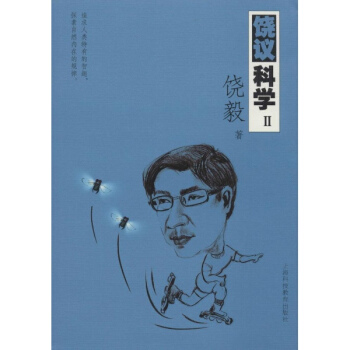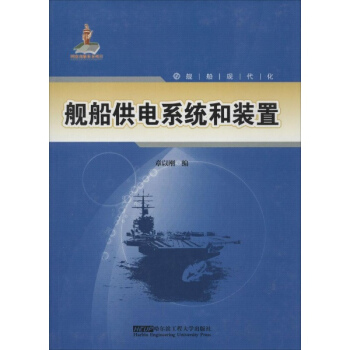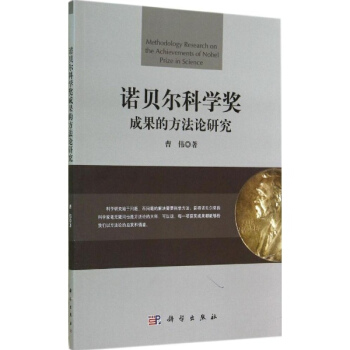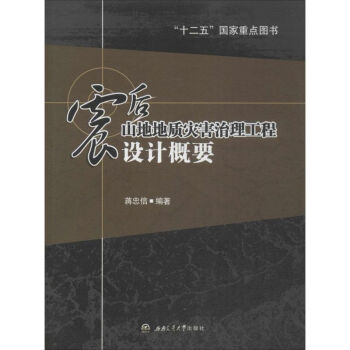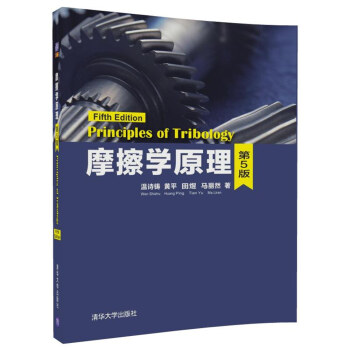

具体描述
内容简介
《摩擦学原理(第5版)》反映了摩擦学研究进展以及作者和同事们从事该领域研究的成果,系统地阐述摩擦学的基本原理与应用,全面反映现代摩擦学的研究状况和发展趋势。 全书共22章,由润滑理论与润滑设计、摩擦磨损机理与控制、应用摩擦学等三部分组成。除摩擦学传统内容外,还论述了摩擦学与相关学科交叉而形成的研究领域。本书针对工程实际中各种摩擦学现象,着重阐述在摩擦过程中的变化规律和特征,进而介绍基本理论和分析计算方法以及实验测试技术,并说明它们在工程中的实际应用。 《摩擦学原理(第5版)》可作为机械设计与理论专业的研究生教材和高等院校机械工程各类专业师生的教学参考书,亦可供从事机械设计和研究的工程技术人员参考。
目录
Part OneLubrication Theory and Lubrication Design
Chapter 1Properties of lubrication film
1.1Lubrication states
1.2Density of lubricants
1.3Viscosity of fluids
1.4Non�睳ewtonian properties and rheological model
1.5Lubricant wettability
1.6Measurement and exchange of viscosity
References
Chapter 2Basic theory of hydrodynamic lubrication
2.1Reynolds equation
2.2Hydrodynamic lubrication
2.3Basic elasticity theory of contact problems
2.4Elastohydrodynamic lubrication (inlet analysis)
2.5Grease lubrication
2.6Elastohydrodynamic lubrication state diagrams
References
Chapter 3Numerical methods of lubrication calculation
3.1Numerical solutions of Reynolds equation
3.2Numerical solutions of energy equation
3.3Numerical solutions of elastohydrodynamic lubrication
3.4Multi�瞘rid level method used in lubrication problems
References
Chapter 4Lubrication design of typical mechanical elements
4.1Slider and thrust bearing
4.2Journal bearing
4.3Hydrostatic bearing
4.4Squeezing bearing
4.5Dynamic bearing
4.6Gas bearing
4.7Rolling contaet bearing
4.8Gear lubrication
4.9Cam lubrication
References
Chapter 5Lubrication of special fluid medias
5.1Magneto fluid lubrication
5.2Micro�瞤olar fluid lubrication
5.3Liquid crystal lubrication
5.4Double electric layer effect in water thin film lubrication
5.5Emulsion lubrication
References
Chapter 6Transformation of lubrication states and nano thin film lubrication
6.1Transformation of lubrication states
6.2Nano film lubrication of liquid
6.3Numerical analysis of thin film lubrication
6.4Nano film lubrication of gas
References
Chapter 7Boundary lubrication and additives
7.1Types of boundary lubrication
7.2Theory of boundary lubrication
7.3Additives of lubricant
References
Chapter 8Lubrication failure and mixed lubrication
8.1Influence of roughness and material visco�瞖lastic property on lubrication
failure
8.2Influence of fluid limiting shear stress on lubrication failure
8.3Influence of temperature on lubrication failure
8.4Mixed lubrication state
References
Part TwoFriction and Wear Mechanisms and Friction Control
Chapter 9Surface topography and surface contacts
9.1Parameters of surface topography
9.2Statistic parameters of surface topography
9.3Rough surface contacts
References
Chapter 10Soliding friction and its applications
10.1Basic characteristics of friction
10.2Macro friction theory
10.3Micro friction theory
10.4Sliding friction
10.5Other friction problems and friction control
References
Chapter 11Fretting friction and its applications
11.1Development and classification of fretting tribology
11.2Theory of fretting friction
11.3Approches of improving fretting performance
11.4Researches on the applications of fretting tribology
References
Chapter 12Rolling friction and its applications
12.1Basic theories of rolling friction
12.2Wheel�瞨ail rolling friction and thermal analysis
12.3Application of rolling friction theory in design of lunar rover
vehicle
References
Chapter 13Wear characteristics and mechanisms
13.1Wear classification
13.2Abrasive wear
13.3Adhesive wear
13.4Fatigue wear
13.5Corrosion wear
References
Chapter 14Macro wear laws and wear theories
14.1Materials of friction pair
14.2Curves of wear processes
14.3Surface quality and wear
14.4Adhesive wear theory
14.5Energy wear theory
14.6Spalling theory and fatigue wear theory
14.7Wear calculation
References
Chapter 15Anti�瞱ear designs and surface coatings
15.1Choice of lubricants and additives
15.2Principles of friction pair material choice
15.3Surface coatings
15.4Measurement of coating properties
References
Chapter 16Tribological experiments and state detection
16.1Methods and equipments of tribological experiments
16.2Measurement of wear
16.3State analysis of friction surface
16.4Detection of wear states
16.5Analysis of wear failure
References
Part ThreeApplied Tribology
Chapter 17Micro tribology
17.1Micro friction
17.2Micro contact and adhesive phenomena
17.3Micro wear
17.4Molecular film and boundary lubrication
References
Chapter 18Metal forming tribology
18.1Mechanics basics in forming technology
18.2Forge tribology
18.3Drawing tribology
18.4Milling tribology
18.5Cutting tribology
References
Chapter 19Biological tribology
19.1Fundamental of mechanics on biological soft tissue
19.2Characteristics of liquid lubricant of joints
19.3Men and animal joint lubrication
19.4Friction and wear of joint
19.5Study on other biological tribology
References
Chapter 20Space tribology
20.1Space machinery and features of space tribology
20.2Analysis of space tribological properties
20.3Space lubricants
20.4Features of space lubrication
20.5Accelerating life tests and equipments
References
Chapter 21Ocean tribology
21.1Ocean enriro ment and ocean tribology characteristics
21.2Systems and equipments in ocean tribology
21.3Tribology characteristics of ocean materials
21.4Derelopment trend of ocean tribology
References
Chapter 22MEMS tribology
22.1Tribological problems in MEMS
22.2Friction analysis of MEMS
22.3Study on micro�瞞otor friction
22.4Wear analysis of MEMS
References
Chinese�睧nglish List and Index
精彩书摘
第1篇润滑理论与润滑设计
第1章润滑膜特性
1.1润滑状态
润滑的目的是在相互摩擦表面之间形成具有法向承载能力而切向剪切强度低的稳定的润滑膜,用它来减少摩擦阻力和降低材料磨损。在现代工业中,用作润滑剂的流体种类繁多,除了最常用的润滑油和润滑脂之外,空气或气体润滑现在已相当普遍,用水或其他工业流体作为润滑剂也日益广泛,例如,在核反应堆里采用液态金属钠润滑。在某些场合也可以使用固体润滑剂,例如石墨、二硫化钼或聚四氟乙烯(PTFE)等。所以,润滑膜可以是液体或气体组成的流体膜,也可以是固体膜。根据润滑膜的形成原理和特征,润滑状态可以分为: ①流体动压润滑; ②流体静压润滑; ③弹性流体动压润滑(简称弹流润滑); ④薄膜润滑; ⑤边界润滑; ⑥干摩擦状态等6种基本状态。表1��1列出了各种润滑状态的基本特征。
表1��1各种润滑状态的基本特征
润滑状态典型膜厚润滑膜形成方式应用
流体动压润滑1~100μm由摩擦表面的相对运动所产生的动压效应形成流体润滑膜中高速下的面接触摩擦副,如滑动轴承
液体静压润滑1~100μm通过外部压力将流体送入摩擦表面之间,强制形成润滑膜各种速度下的面接触摩擦副,如滑动轴承、导轨等
弹性流体动压润滑
0.1~1μm与流体动压润滑相同中高速下点线接触摩擦副,如齿轮、滚动轴承等
薄膜润滑10~100nm与流体动压润滑相同,同时受表面效应作用低速下高精度接触摩擦副,如精密滚动轴承等
边界润滑1~50nm润滑油分子与金属表面产生物理或化学作用而形成润滑膜低速重载条件下的高精度摩擦副
干摩擦1~10nm表面氧化膜、气体吸附膜等无润滑或自润滑的摩擦副
各种润滑状态所形成的润滑膜厚度不同,但是单纯由润滑膜的厚度还无法准确地判断润滑状态,尚需与表面粗糙度进行对比。图1��1列出润滑膜厚度与粗糙度的数量级。只有当润滑膜厚度足以超过两表面的粗糙峰高度时,才有可能完全避免峰点接触而实现全膜流体润滑。对于实际机械中的摩擦副,常常会有几种润滑状态同时存在,统称为混合润滑状态。
图1��1润滑膜厚度与粗糙度
根据润滑膜厚度鉴别润滑状态的方法虽然是可靠的,但由于测量上的困难,往往不便采用。有时,也可以用摩擦因数值作为判断各种润滑状态的依据。图1��2为不同润滑状态对应的摩擦因数的典型值。
图1��2摩擦因数的典型值
随着工况参数的改变,润滑状态将发生转化。图1��3是典型的Stribeck曲线,它表示滑动轴承的润滑状态转化过程和摩擦因数随无量纲轴承特性数(ηU/p)的变化规律。这里,η为润滑油黏度; U为滑动速度; p为轴承单位面积载荷。
图1��3Stribeck曲线
应当指出: 研究各种润滑状态特性及其变化规律所涉及的学科各不相同,处理问题的方法也不一样。流体润滑包括流体动压润滑和流体静压润滑,主要是应用黏性流体力学和传热学等来分析润滑膜的承载能力及其他力学特性。在弹性流体动压润滑中,由于载荷集中作用,还要根据弹性力学分析接触表面的变形以及润滑剂的流变学性能。对于边界润滑状态,则要从物理化学的角度研究润滑膜的形成与破坏机理。薄膜润滑兼有流体润滑和边界润滑的特性。在干摩擦状态中,主要的问题是限制磨损,涉及材料科学、弹塑性力学、传热学、物理化学等内容。
1.2润滑油的密度
密度是润滑剂最常用的物理指标之一。在润滑分析中,通常认为润滑油是不可压缩的,并且忽略热膨胀的影响,因而将密度视为常量。一般以20℃时的密度作为标准。表1��2给出了部分基础润滑油的密度。
表1��2部分基础润滑油的密度
润滑油密度/(g/cm3)润滑油密度/(g/cm3)
三磷酸酯0.915~0.937水溶性聚亚烷基乙二醇1.03~1.06
二苯基磷酸酯0.990非水溶聚亚烷基乙二醇0.98~1.00
三羟甲苯基磷酸酯1.161二甲基硅油0.76~0.97
羟甲苯基二苯磷酸酯1.205乙基�布谆�硅油0.95
氯化二苯基1.226~1.538苯基甲基硅油0.99~1.10
事实上,润滑油的密度是压力和温度的函数。在某些条件下,例如弹性流体动压润滑状态,必须考虑润滑油的密度变化,进行变密度的润滑分析。
润滑油所受压力增加时,其体积减小因而密度增加,所以密度随压力的变化可用压缩系数C来表示,即
C=1ρdρdp=VMd(M/V)dp=-1VdVdp (1��1)
式中,V为已知质量为M的润滑油的体积。
由此可得
ρp=ρ0[1+C(p-p0)]
式中,ρ0和ρp分别为在压力p0和p下的密度。
对于润滑油可取C的表达式为
C=(7.25-lgη)×10-10
式中,黏度η的单位为mPa·s时,C的单位为m2/N。
为了计算方便,也常采用如下的密度与压力关系式
ρp=ρ01+0.6p1+1.7p (1��2)
式中,p的单位为GPa。
温度对密度的影响是由于热膨胀造成体积增加,从而使密度减小。若润滑油的热膨胀系数为αT,则
ρT=ρ0[1-αT(T-T0)] (1��3)
式中,ρT为温度T时的密度; 而ρ0为温度T0时的密度; αT的单位为℃-1。
通常润滑油的αT值可用两个关系式表示。如果黏度单位用mPa·s,当黏度低于3000mPa·s时,lgη≤3.5,则
αT=10-95lgη×10-4
而当黏度高于3000mPa·s,即lgη>3.5时,
αT=5-38lgη×10-4
1.3流体的黏度
与密度相比,润滑剂的黏度随温度、压力等工况参数的变化更为显著,对润滑的影响很大。气体润滑时,润滑剂的可压缩性(即密度随压力的变化)将具有重要作用。而对于弹性流体动压润滑状态,温度和压力对润滑剂黏度的影响及其压缩性都将成为不可忽略的问题。
1.3.1动力黏度与运动黏度
流体的黏滞性是流体抵抗剪切变形的能力,黏度是流体黏滞性的度量,用以描述流动时的内摩擦。
1. 动力黏度
牛顿(Newton)最先提出黏性流体的流动模型,他认为流体的流动是许多极薄的流体层之间的相对滑动,如图1��4所示。
图1��4牛顿流体流动模型
在厚度为h的流体表面上有一块面积为A的平板,在力F的作用下以速度U运动。此时,由于黏性流体的内摩擦力将运动依次传递到各层流体,使流动较快的层减速,而流动较慢的层加速,形成按一定规律变化的流速分布。当A、B表面平行时,各层流速u将按直线分布。
部分流体满足牛顿黏性定律,即
τ=ηγ· (1��4)
式中,τ为剪应力,即单位面积上的摩擦力,τ=F/A; γ·为剪应变率。
γ·=dγdt=ddtdxdz=ddzdxdt=dudz
由上式可知: 剪应变率等于流动速度沿流体厚度方向的变化梯度。这样,牛顿黏性定律可写成
τ=ηdudz (1��5)
图1��5黏度定义
式中,比例常数η为流体的动力黏度。
动力黏度是剪应力与剪应变率之比。在国际单位制(SI)中,它的单位为N·s/m2,或写作Pa·s,如图1��5所示。
在工程应用中常采用CGS制,动力黏度的单位用Poise,简称P(泊),或P的百分之一,即cP(厘泊)。
1P=1dyn·s/cm2=0.1N·s/m2=0.1Pa·s
各种不同流体的动力黏度数值范围很宽。空气的动力黏度为0.02mPa·s,而水的黏度为1mPa·s,润滑油的黏度范围为2~400mPa·s,熔化的沥青的黏度可达700mPa·s。
凡是服从牛顿黏性定律的流体统称为牛顿流体,而不符合牛顿定律的流体为非牛顿流体。实践证明: 在一般工况条件下的大多数润滑油特别是矿物油均具有牛顿流体性质。
2. 运动黏度
在工程中,常用流体的动力黏度η与其密度ρ的比值作为流体的运动黏度,常用ν表示。运动黏度的表达式为
ν=ηρ (1��6)
运动黏度在国际单位制中的单位为m2/s。
在CGS单位制中,运动黏度的单位为Stoke,简称St(斯),1St=102mm2/s=10-4m2/s。实际上常用St的百分之一,即cSt(厘斯)作为单位,因而1cSt=1mm2/s。
1.3.2黏度与温度的关系
黏度随温度而变化是润滑剂的一个十分重要的特性。通常,润滑油的黏度越高,其对温度的变化就越敏感。
流体的黏度是分子间的引力作用和动量的综合表现。分子间的引力随着分子间的距离会发生明显改变,而分子的动量取决于运动速度。当温度升高时,流体分子运动的平均速度增大,分子的动量增加,分子间的距离增大,从而使分子间的作用力减小。因此,液体的黏度随温度的升高而急剧下降,从而明显影响流体的润滑作用。
为了确定摩擦副在实际工况条件下的润滑性能,必须根据润滑剂所在工作温度下的黏度进行分析。这样,热分析和温度计算就成为润滑理论的主要内容之一。而气体的黏度则随温度的升高而略有增加。
人们对于润滑剂的黏度温度特性做了大量的研究,并提出了许多关系式,各种公式都存在着应用上的局限性。
1. 黏温方程
大多数润滑油的黏度随温度上升会剧烈下降,它们之间的变化规律的次切线1ηdηdT具有多项式形式。黏度与温度的关系式可以写成如下几种形式:
Reynoldsη=η0e-β(T-T0) (1��7)
Andrade�睧rying η=η0eαT(1��8)
Slotte η=s(α+T)m (1��9)
Vogel η=η0eb/(T+θ) (1��10)
式中,η0为温度为T0时的黏度; η为温度为T时的黏度; β为黏温系数,可近似取作0.03/℃; m=1,2,…; θ表示“无限黏度”温度,对于标准矿物油,可取95; α、s、b均为常数。
在这些黏温方程中,Reynolds黏温方程在数值计算中使用起来较方便,而Vogel黏温方程描述黏温关系更为准确。
2. ASTM黏温图
美国材料试验协会(American Society of Testing and Materials,ASTM)用黏度指数来表示黏温关系,并给出相应的黏温线图。其关系式为
(ν+a)=bd1/Tc(1��11)
式中,ν为运动黏度; a、b、c和d均为常数; T为绝对温度。
图1��6ASTM线图
当ν的单位为mm2/s时,a=0.6~0.75,b=1,d=10,在ASTM坐标纸上,采用双对数的纵坐标和单对数的横坐标,上式为一直线,如图1��6所示。其方程为
lnln(ν+a)=A-BlnT (1��12)
其优点是只需测定两个温度下的黏度值以决定待定常数A和B,然后根据直线即可确定其他温度下的黏度。
对于通常的矿物油,采用ASTM线图十分有效,还可将直线的倾角用作评定润滑油黏温特性的指标。
3. 黏度指数
用黏度指数(viscosity index,VI)来表示各种润滑油黏度随温度的变化程度,是一种应用普遍的经验方法。它的表达式为
VI=L-UL-H×100 (1��13)
首先,测量出待测油在210�酰ā�85℃)时的运动黏度值,然后据此选出在210�蹙哂型�样黏度且黏度指数分别为0和100的标准油。式(1��13)中的L和H是这两种标准油在100�酰ā�38℃)时的运动黏度。U是该待测油在100�跏钡脑硕�黏度。然后用式(1��13)计算得到该润滑油的黏度指数值。
在表1��3中给出了几种润滑油的黏度指数。
表1��3几种润滑油的黏度指数
油品VI值ν100��/(mm2/s)ν210��/(mm2/s)
矿物油10013214.5
多级油10W/3014714017.5
硅油40013053
黏度指数高的润滑油表明它的黏度随温度的变化小,因而黏温稳定性能好。
1.3.3黏度与压力的关系
当液体或气体所受的压力增加时,分子之间的距离减小而分子间的作用力增大,因而黏度增加。通常,当矿物油所受压力超过0.02GPa时,黏度随压力变化会十分显著。随着压力的增加,黏度的变化率也增加,润滑油在1GPa压力下的黏度比其常压下的黏度高几个量级。当压力更高时,矿物油将丧失液体性质而变成蜡状固体。由此可知: 对于重载荷流体动压润滑,特别是弹性流体动压润滑状态,黏压特性是至关重要的因素之一。
描述黏度和压力之间变化规律的黏压方程主要有
Barusη=η0eαp(1��14)
Roelandsη=η0exp{(lnη0+9.67)[-1+(1+p0p)z]}(1��15)
Cameronη=η0(1+cp)16(1��16)
式中,η为压力p时的黏度; η0为大气压下(p=0)的黏度; α为黏压系数; p0为压力系数,可取为5.1×10-9; 对一般的矿物油,z通常可取为0.68,c可近似取为α/15。
当压力大于1GPa后,Barus黏压方程得到的黏度值过大,而Roelands黏压方程则更符合实际情况。
黏压系数α一般可取2.2×10-8m2/N。各类润滑油的黏压系数值在表1��4和表1��5中给出。
表1��4矿物油的黏压系数α
10-8m2/N
温度/℃
环烷基石蜡基
锭子油轻机油重机油轻机油重机油汽缸油
302.12.62.82.22.43.4
601.62.02.31.92.12.8
901.31.61.81.41.62.2
表1��5部分基础油在25℃时的黏压系数α
10-8m2/N
润滑油类型α润滑油类型α
石蜡基1.5~2.4烷基硅油1.4~1.8
环烷基2.5~3.6聚醚1.1~1.7
芳香基4~8芳香硅油3~5
聚烯烃1.5~2.0氯化烷烃0.7~5
双酯1.5~2.5
在国外,很早就开始研究润滑油的黏压特性,相继发表了几百种润滑油的黏压数据,建立的高压黏度计的工作压力达到3GPa以上。
1.3.4黏度同时随温度和压力变化的关系式
当同时考虑温度和压力对黏度的影响时,通常将黏温、黏压公式组合在一起。通常采用的表达式如下:
Barus与Reynoldsη=η0exp[αp-β(T-T0)] (1��17)
Roelands
η=η0exp(lnη0+9.67)(1+5.1×10-9p)0.68×T-138T0-138-1.1-1(1��18)
式(1��17)较简单,便于运算; 而式(1��18)则较准确。
图1��7不同类型流体的τ�拨�·曲线
1.4非牛顿特性与流变模型
一般地,润滑油可视为牛顿流体。对于牛顿流体,剪应力与剪应变率的关系是通过原点的直线,如图1��7中的C,直线的斜率为黏度值。牛顿流体的黏度只随温度和压力而改变,与剪应变率无关。
凡是不同于上述特性的流体统称为非牛顿流体,如图1��7中的润滑脂、A、B和D。非牛顿流体可以表现为塑性、伪塑性和膨胀性等形式。对于伪塑性和膨胀性流体,通常用指数关系式近似地描述其非线性性质,即
τ=�鸡�·n(1��19)
式中,�己蚽为常数; 对于牛顿流体n=1,�嘉�动力黏度。
图1��7中A代表的塑性体亦称Bingham体,它具有屈服应力τs,当剪应力超过τs时才产生流动,其流变关系式为
τ=τs+�鸡�· (1��20)
润滑脂的非牛顿性质类似于Bingham体,但剪应力与剪应变率呈非线性关系。润滑脂的流变特性可用下列公式近似地表述
τ=τs+�鸡�·n (1��21)
为了改善使用性能,现代润滑油通常含有由多种高分子材料组成的添加剂,加之大量使用合成润滑剂,常呈现出显著的非牛顿性质,使得润滑剂的流变行为成为润滑设计中不可忽视的因素。
在润滑理论研究中,常用的非牛顿流体模型的本构方程有以下几种。
前言/序言
清华大学摩擦学国家重点实验室于1984年开始筹建,1988年通过国家验收并正式成立,成为我国摩擦学领域重要的基础性研究和人才培养基地,一直致力于服务国家的现代化建设,迄今已走过30余年的历程。与此同时,温诗铸教授撰写的《摩擦学原理》著作于1988年末定稿,1990年初正式出版发行,迄今也走过近30年历程。在这一过程中,根据科学研究持续发展,我们不断充实和扩展学科内容,相继修订再版。该书可作为培养机械工程学科以摩擦学为研究方向、机械设计与理论专业研究生的学位课程教材,也可作为从事相关学科领域科学技术人员的参考书。
《摩擦学原理》自出版以来得到从事机械工程科技工作的同行们的热情支持,得以广泛引用,对于推动摩擦学知识传播和科学技术发展起到重要作用。1992年,本书获得第六届全国优秀科技图书二等奖。
在这近30年期间,《摩擦学原理》从初版到历次修订共发行了4版。篇幅逐版增加,由初版40.9万字,扩充到第4版67.5万字,增加了近60%,所阐述的科学内容在深度和广度方面都有很大的发展。从《摩擦学原理(第2版)》开始,邀请了在清华大学摩擦学国家重点实验室工作多年的黄平教授共同编写。黄平教授在摩擦学研究中取得了丰硕的创新成果,对于不断提高本书的学术水平做出了重要贡献。
2012年,根据英国Wiley出版社的要求,我们在中文版《摩擦学原理(第4版)》的基础上出版了英文版Principles of Tribology。2015年,再次应Wiley出版社的要求,作者进一步充实和补充内容,Principles of Tribology(2nd Edition)于2017年8月在国外出版发行,同年10月在中国大陆出版发行。
科学实践使我们深刻认识到科技著作必须跟随着科学技术的日益发展而不断充实提高,我们需要努力发现本学科发展的新原理新技术,同时也要密切关注未来社会生产提出的挑战和需求。为此,在《摩擦学原理(第5版)》的编写过程中,我们力争做到推陈出新。为此,我们邀请清华大学摩擦学国家重点实验室在科学研究中做出突出贡献的青年学者田煜和马丽然共同参与编写。他们学风严谨踏实,具有开拓进取和求实创新的精神,一贯坚持深入科学研究实践。在本学科及其相关领域,积累了较全面的认识。本书由他们对于全书进行进一步整合修订,同时,根据近年来科学技术的发展补充了新的内容。
在本书编写中,我们力图全面系统地反映当今摩擦学的基本内容,同时,介绍新近的研究进展以及未来发展趋势。对于本学科的经典内容作了进一步精炼。
本书引用了国内外许多学者的研究成果,作者对于他们为摩擦学发展做出的贡献,及为本书出版给予的热情支持,表示最衷心的感谢!
作者2018年1月于清华大学
用户评价
坦白说,我选择这本书是因为我的导师推荐,他强调在现代制造领域,对表面工程的理解深度直接决定了产品的可靠性和效率。初翻这本书,我最大的感受是其内容的覆盖广度令人印象深刻,它几乎涵盖了摩擦学研究的所有主流方向。从基础的范德华力在微观摩擦中的作用,到宏观尺度的润滑剂粘度和剪切速率之间的关系,它都做了详尽的阐述。我特别留意了其中关于“摩擦与磨损的实时在线监测技术”的部分,这部分内容紧密结合了物联网和传感器技术的发展,非常具有现代感。相较于很多老旧的摩擦学著作,这本书明显融入了更多关于材料表面改性、薄膜沉积技术对摩擦性能影响的最新研究成果。虽然全书篇幅巨大,内容密度极高,但作者的行文风格保持了一种克制的学术口吻,既不故作高深,也不过于口语化,力求精确地传达科学信息。我需要花大量时间去消化它关于tribofilm(摩擦化学膜)形成动力学的章节,感觉这是理解复杂润滑体系性能的关键所在。
评分说实话,当我看到《摩擦学原理(第5版)》这本书的定价和厚度时,我有些犹豫,但最终还是决定购入,因为我发现它在“环境友好型摩擦学”这个新兴领域的内容非常扎实。在这个对环保要求越来越高的时代,无油润滑和水基润滑的研究变得至关重要。这本书详细介绍了基于绿色化学原理设计的可生物降解润滑剂的性能评估方法,以及它们在减少摩擦和磨损方面的潜力。特别值得称赞的是,它对“摩擦学性能的标准化测试方法”进行了详尽的梳理和比较,包括不同标准(如ASTM, ISO)在测量摩擦系数和磨损体积时的差异和优劣。这对于我们进行跨国合作项目时的报告撰写和数据对比是极其重要的。阅读体验上,虽然是专业书籍,但作者采用了清晰的排版和合理的图文配比,使得长时间阅读的疲劳感有所降低。总而言之,这本书的更新不仅是量的积累,更是对学科前沿热点和工程应用痛点的精准把握,是一部名副其实的经典重构之作。
评分拿到这本书,我主要是冲着它历经多版迭代积累下来的权威性去的。我之前在进行高载荷工况下的轴承设计时,遇到了一些关于接触应力集中和疲劳寿命预测的瓶颈,手头的资料总感觉不够系统和深入。这本书的结构安排逻辑性极强,它先从基本的接触几何和材料特性讲起,逐步过渡到热力耦合效应和粘附磨损等复杂问题。我惊喜地发现,第五版在“磨损机理”这一章里,对不同类型的磨粒磨损和腐蚀磨损的判据进行了详尽的对比和修正,这对我正在研究的矿山机械部件寿命评估至关重要。书中的图表制作精良,很多经典实验数据和理论曲线都清晰地呈现出来,便于对照理解。虽然某些公式推导部分对于初学者来说可能稍显繁琐,但我更欣赏它这种严谨的学术态度,每一个结论都有坚实的理论基础支撑,而非空泛的描述。随书附带的光盘内容,我还没来得及仔细研究,但通常这种配套资料会包含大量的仿真数据或实验视频,相信能进一步提升学习的直观性。这本书更像是教科书与参考手册的完美结合体。
评分这本大部头的《摩擦学原理(第5版)》初次拿到手,给我的感觉就是厚重,沉甸甸的,封面设计朴实无华,一看就是那种扎扎实实做学问的书。我一直对材料与机械接触面的机理很感兴趣,尤其是在高速运转和极端工况下的失效问题,这本书正好切中了我的需求。我翻阅了目录,发现它对润滑理论、接触力学、磨损机制这几大板块的覆盖面非常广,从宏观的摩擦现象到微观的表面形貌变化,都有深入的探讨。我特别关注了它对新型润滑材料和智能摩擦学的介绍,感觉比起我之前读过的老版本教材,内容更新的速度非常跟得上工业前沿。特别是关于自润滑材料和边界润滑的章节,案例分析非常详尽,不仅仅是理论推导,还结合了实际工程中的应用场景,这对于工程技术人员来说,价值极高。我已经迫不及待地想深入学习其中的流体力学润滑模型,看看这次第五版在求解复杂工况下的油膜厚度和压力分布上,是否引入了更先进的数值计算方法。这本书显然不是那种走马观花的科普读物,它需要读者有一定的机械基础和数学功底才能完全领会其精髓,但对于想在摩擦学领域深耕的人来说,它无疑是一本不可或缺的工具书和案头宝典。
评分我是一名从事航空发动机叶片维护工作的工程师,对我而言,选择一本优秀的摩擦学参考书,关键在于其能否解决实际工作中的高温、高真空、高应变率下的材料行为问题。这本书的第五版,在“极端条件下的摩擦行为”这一块做了显著的扩充,这正是我所需要的。我看到它详细分析了在超高温下润滑剂的分解产物如何参与到摩擦界面反应中,形成具有保护性的“固体润滑层”,这比我之前看的任何资料都要细致。书中的章节衔接非常自然,从基础的牛顿流体润滑到复杂的非牛顿流体行为,再到固体润滑,知识体系层层递进,非常利于构建一个完整的知识框架。虽然一些早期的理论模型在面对现代复杂合金体系时显得力不从心,但作者并未回避这些局限性,而是清晰地指出了它们的适用范围和修正方向,展现了科学的求实精神。对于工程实践者来说,能清晰地区分理论的适用边界,比盲目套用公式要重要得多,这本书在这方面做得非常出色。
相关图书
本站所有内容均为互联网搜索引擎提供的公开搜索信息,本站不存储任何数据与内容,任何内容与数据均与本站无关,如有需要请联系相关搜索引擎包括但不限于百度,google,bing,sogou 等,本站所有链接都为正版商品购买链接。
© 2026 windowsfront.com All Rights Reserved. 静流书站 版权所有

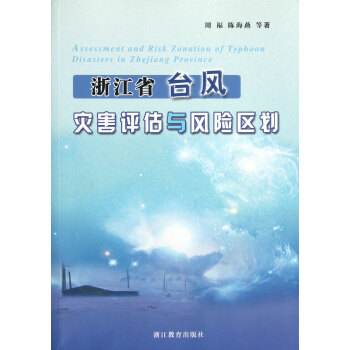
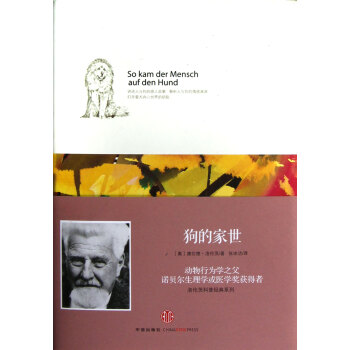




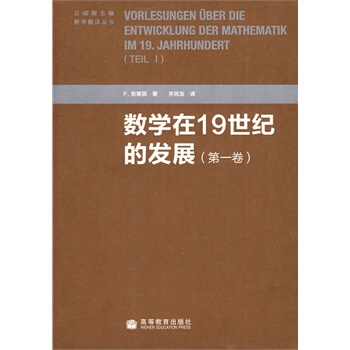
![[按需印刷] B介子物理学 pdf epub mobi 电子书 下载](https://pic.windowsfront.com/1257233372/53ed8fcaN1e44d5d2.jpg)

![[按需印刷] 焦虑行为学与生物化学研究 pdf epub mobi 电子书 下载](https://pic.windowsfront.com/1278546178/54006adcNcea7e35e.jpg)
